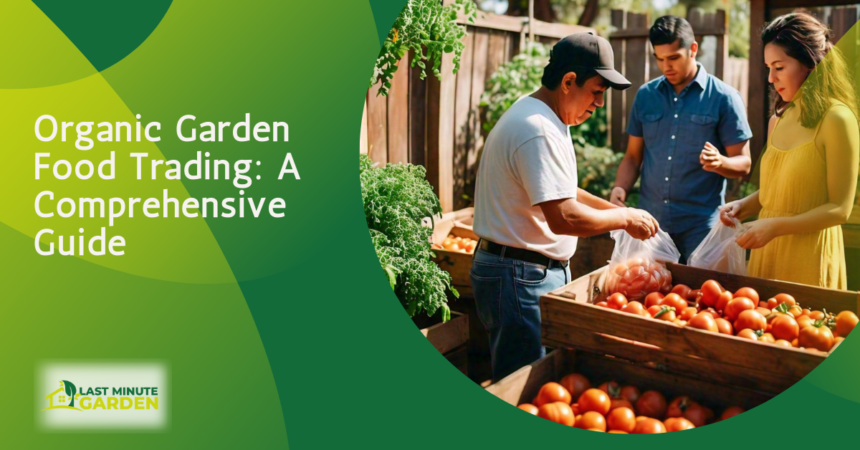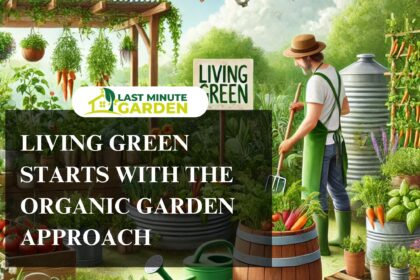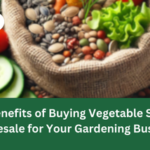Organic Garden Food Trading: A Comprehensive Guide
Are you ready to turn your backyard into a community center? Welcome to the exciting world of organic garden food trading.
Here, urban gardening, community-supported agriculture (CSA), and the farm-to-table movement come together.
Get ready to start a journey that will help you build a strong community, support agriculture, and maybe even make your gardening hobby profitable.
This guide will take you through the world of organic garden food commerce. We’ll cover the USDA organic certification, the perks of locally-sourced produce, and how to succeed in market gardening.
You’ll learn how to make your backyard a center of sustainable agriculture and food cooperatives.
Cultivating a Flourishing Community through Home-Grown Produce
In urban homesteading and backyard gardening, community strength is key. Sharing a love for long lasting food production helps build strong neighborhood food systems. These systems improve both your life and your community’s health.
Identifying Your Garden Plot and Vision
First, look at the space you have for a garden. Also, consider the topography of your yard. There are methods to get around sloping backyards. Building an organic terrace garden creates flat areas for your organic garden.
Think about how much sunlight it gets, the soil quality, and any special spots for plants. Then, imagine what you want your garden to be. It could be a place for veggies, fruits, herbs, or flowers.
Fostering Farmer Community Engagement and Participation
Talk to your neighbors and other gardeners to create a group. Plan workshops, potlucks, and events to share ideas and help each other. Working together, you can solve problems, share tools, and feel like you belong in your gardening group.
Embracing Seasonal Practices and Knowledge-Sharing
- Use organic gardening methods to keep your soil and ecosystem healthy over time.
- Try composting, saving water, and controlling pests without harming the environment.
- Share what you know and learn from others in your area. This keeps the gardening community growing and improving.
As you grow your own food and connect with others, you’ll see how powerful conventional food systems are. Creating a strong community garden does more than help you. It makes your neighborhood more resilient and lively.
The USDA Certified Organic Process
If you love sustainable crop cultivation and want to sell your produce as USDA organic, you need to know the certification process. This process is strict and comes from the United States Department of Agriculture (USDA). It makes sure your efforts meets high organic standards.
Step 1: Developing an Organic System Plan
The first step is creating an Organic System Plan (OSP). This plan details how you manage your soil, crops, pests, and records. It shows you follow USDA organic rules, which mean no synthetic fertilizers, pesticides, or genetically modified organisms.
Step 2: On-Site Inspections and Certifier Review
After your OSP is ready, a USDA-approved agent will visit your facility. They check if you meet organic standards, look at your records, and offer advice for better compliance. Then, the certifier will decide if you get organic certification.
Keeping your organic certification means yearly inspections to stay in line with USDA rules. This dedication to sustainable crop production and openness is what makes the USDA organic label special. It tells consumers their food is truly organic.
Organic garden food trading: A Localized Approach to Fresh Produce
The rise of local food systems is big in sustainable agriculture. More people want to eat straight from field produce for its health and environmental benefits. This shift highlights urban agriculture, partnership and community-supported agriculture (CSA). These methods help gardeners and small farmers feed their communities and support sustainable nutrition.
The Benefits of Certified Organic Produce
Growing and selling organic garden food locally has many perks. It cuts down on the need for long-distance transport, which is good for the planet. It also helps people connect more with their food, knowing where it comes from and how it’s made.
Local food systems help small farmers and gardeners too. They can sell directly to customers and meet their needs. This supports the local economy and encourages cultivation that’s good for the earth.
Factors to Consider Before Starting a Market Farm
Turning a personal garden into a food market needs a lot of thought. You should look into what people in your area want to buy. Know what they like, how much they’re willing to pay, and who else is selling similar products.
- Check what people in your area want from organic produce and see if there’s a gap in the market.
- Look at who else is selling food directly to customers and what they offer.
- Choose the right crops and ways to grow them that fit what people like and are good for the planet.
- See if you can work with local groups like community centers or schools to sell more and reach more people.
- Learn about the rules and certifications you need, like the USDA organic label, to make sure you’re doing things right.
By thinking through these points, you can start a market garden that’s good for the community and the earth.
Practical Strategies for Successful Market Gardening
Starting your market gardening journey means you need the right tools and equipment. These tools help with sustainability and keeping your body healthy. Items like the broadfork, sturdy shovels, and handy trowels are key for your small-scale gardening.
Essential Tools and Equipment
Market gardening doesn’t need big, expensive machines. But, having quality tools can boost your work efficiency and productivity. Here are some must-haves:
- Broadfork for loosening and aerating the soil
- Sturdy shovels for turning and moving earth
- Handheld tools like trowels, hoes, and weed rakes
- A dependable seeder for accurate seed planting
- A wheelbarrow and garden cart for transporting materials
- Access to fertile land, water, high-quality seeds, and soil amendments
Meticulous Planning and Record-Keeping
For gardening success, planning and keeping records are key. Map out your crop rotation, track planting schedules, and monitor yields. This helps you adjust to changes and meet market demands.
Identifying and Accessing Retailer Outlets
Finding the right places for the distribution and sales of your produce is crucial. Look into farmers’ markets, CSAs, or local restaurants. Knowing what your customers want helps you tailor your products and increase sales.
With the right tools, careful planning, and the right market access, your market gardening can thrive in your community.
Conclusion
Starting your organic garden food commerce journey changes your community and the environment for the better. You’re growing food at home, following USDA organic rules, and using smart gardening methods. This helps your neighbors get fresh, healthy food and builds a strong community feeling.
This guide has given you the skills and tools to start a local food economy that helps everyone. By choosing organic gardening and community-based agriculture, you’re part of a big effort towards sustainable food systems and small-scale farming.
As more people need food, your work in organic garden food trading is more important than ever. Enjoy seeing your community, soil, and crops do well. This isn’t just a hobby; it’s a journey!





